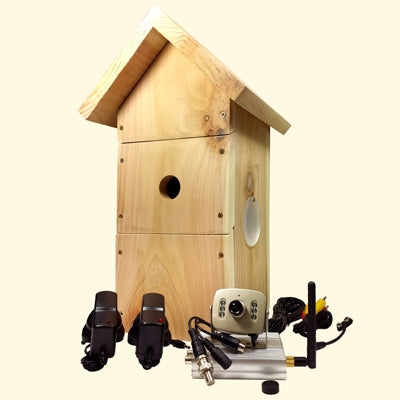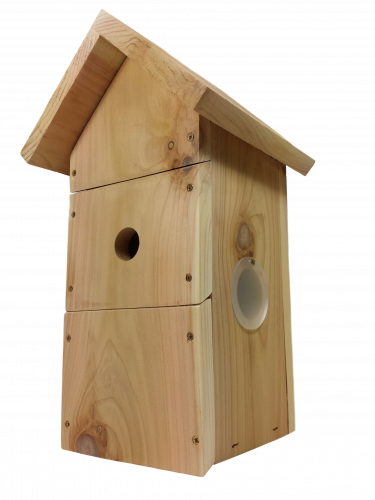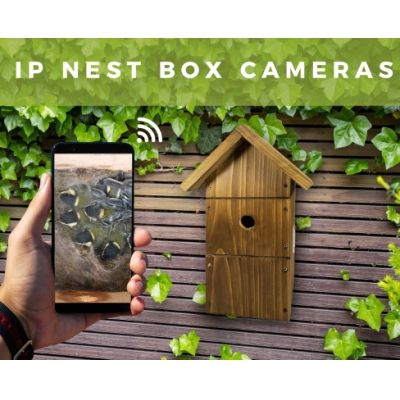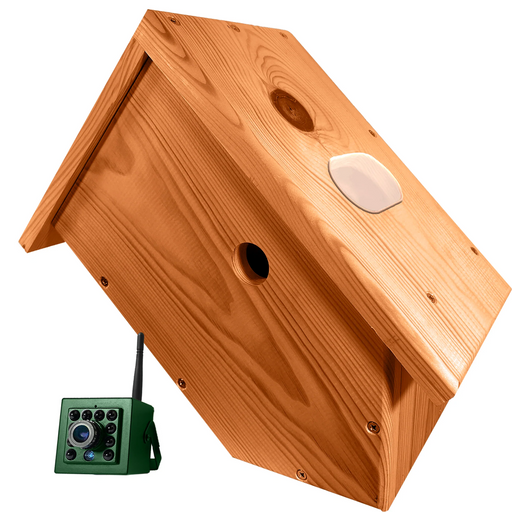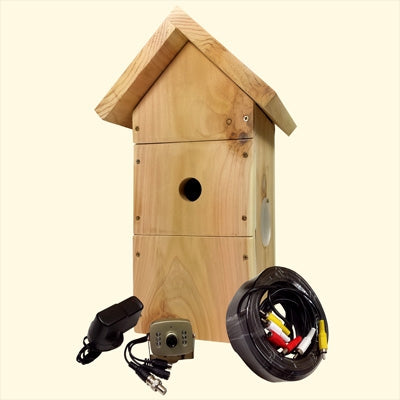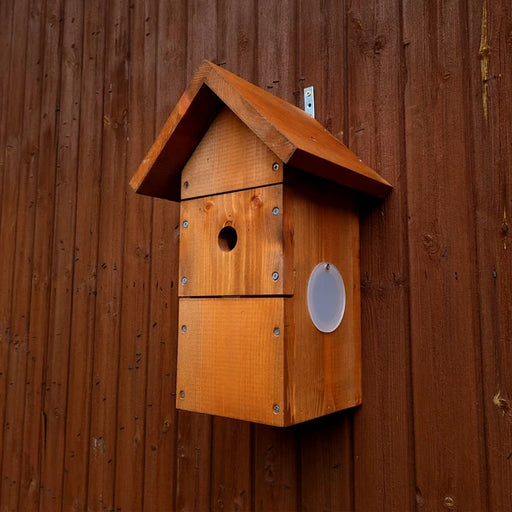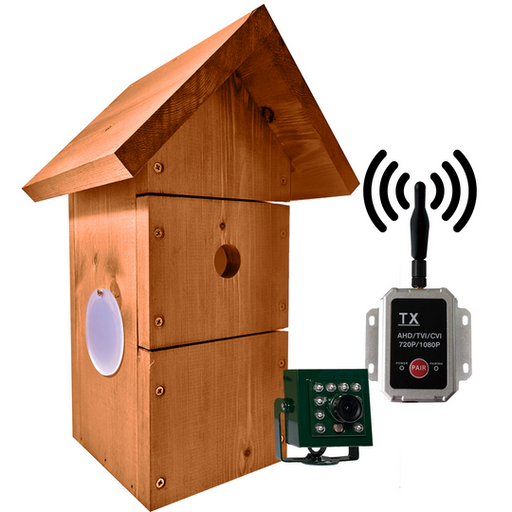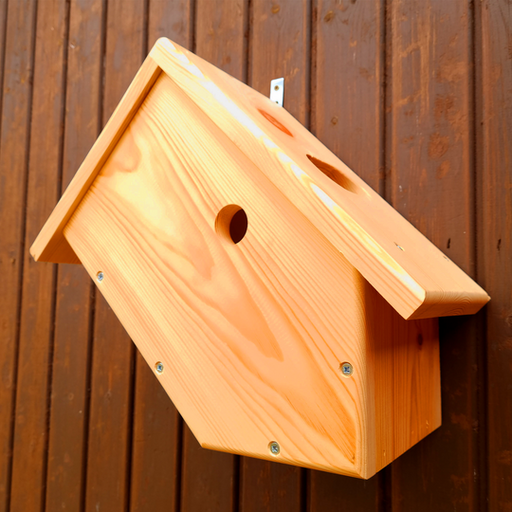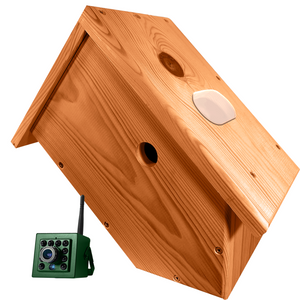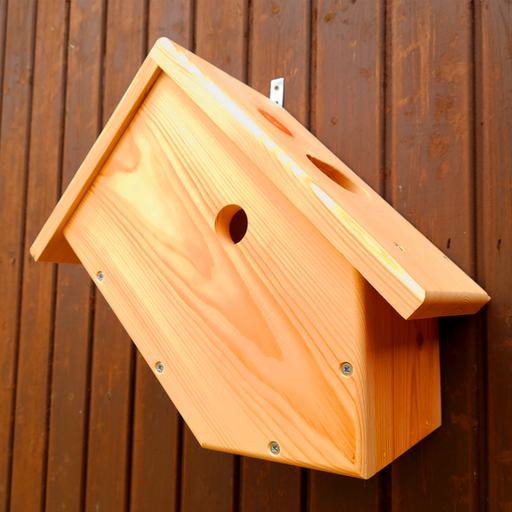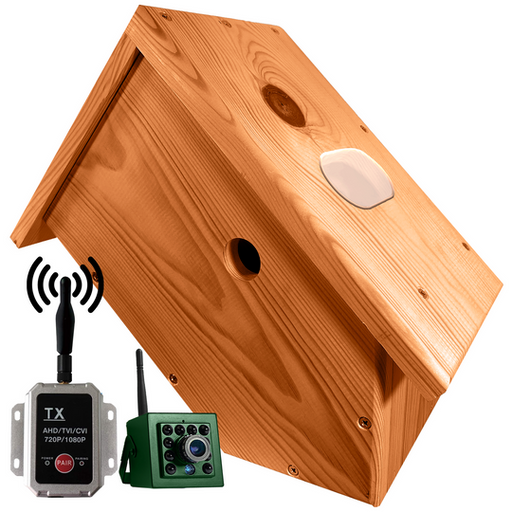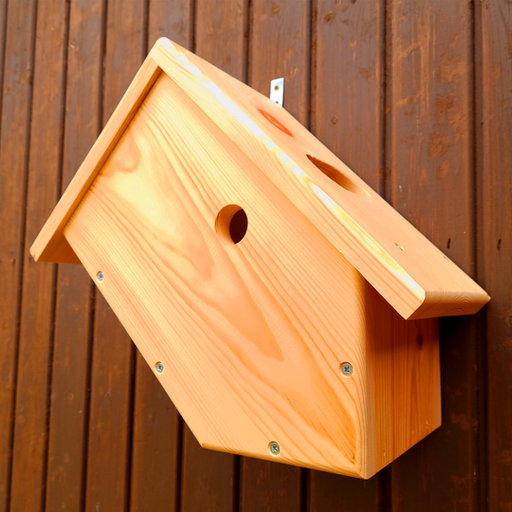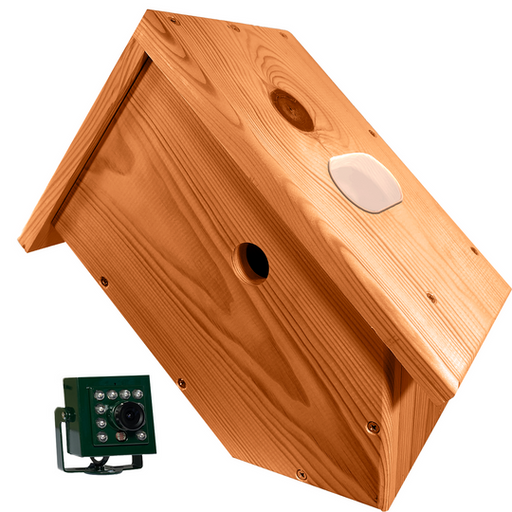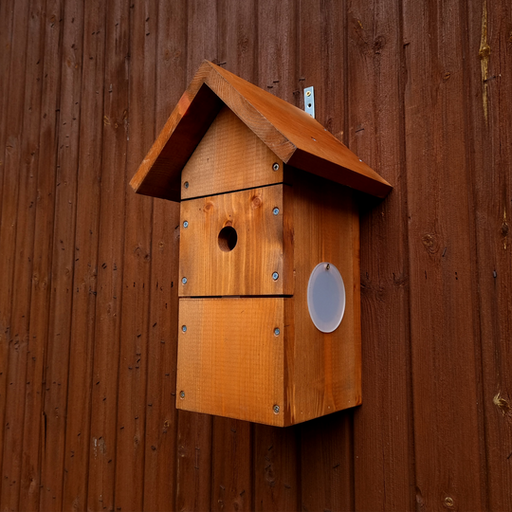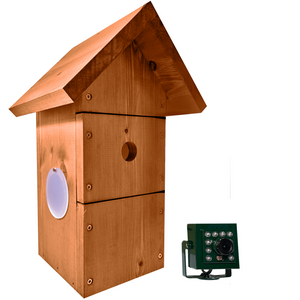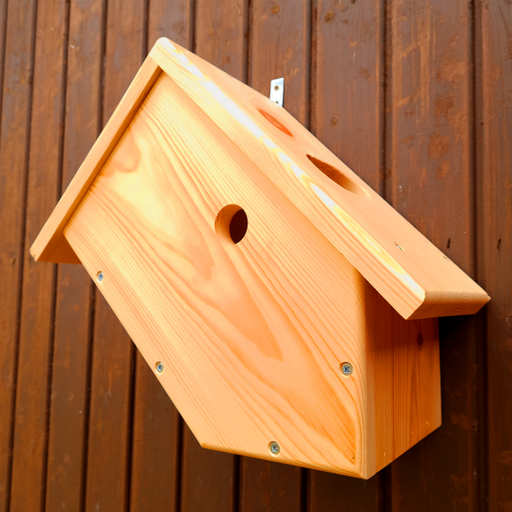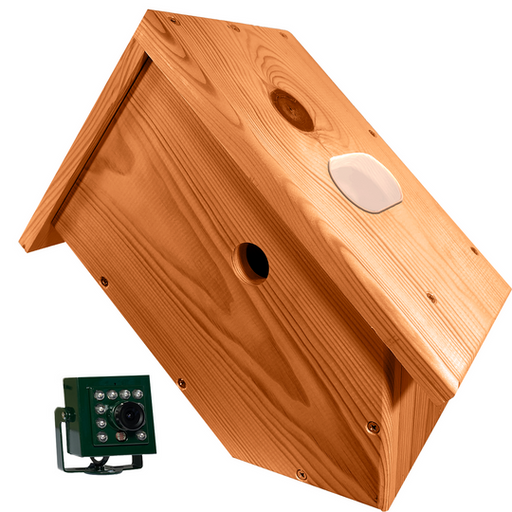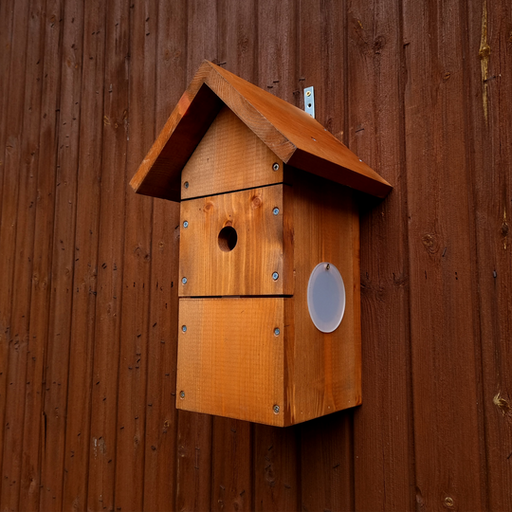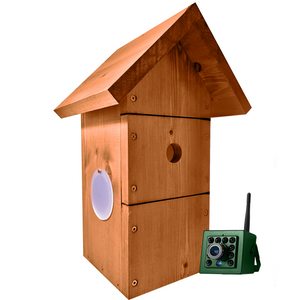This is a very common question we are asked by first time users. We've made a quick summary below.
Wired Nest Box Cameras
Very easy setup with typically only 3 components.
A long cable runs all the way from the wired bird box camera back to a viewing monitor/TV.
The power plug would be connected at the end of the long cable.
Cable lengths are available of up to 100m. Further lengths can be acheived.
A new variant of a wired bird box camera system we have is in the IP range. This would connect to your network instead of directly to a TV.
Wireless Nest Box Cameras
We've got a few different wireless options. We'll cover the standard basic wireless system here which include the analogue and digital range.
A wireless camera is installed within the nest box just like a wired camera.
As with all electrical devices this does need power. A mains power plug is supplied with a 5m extension cable to run to the wireless camera. If a local power plug from a shed of other building is available, using this would be ideal.
Other options supplied separately are to use battery packs or solar panel systems.
A 5m extension cable is used for the power to keep sufficient distance away from the nesting site. Further extensions are available.
A pick up receiver is placed indoors and is connected to a monitor. This picks up the video/audio from the camera's wireless transmission.
WiFi Systems
We do stock a WiFi Digital Nest Box Camera System which does not include a receiver, and relies on an APP for streaming the footage live over a network.
Our HD WiFi Camera system can be found here: WiFi HD Bird Box Camera System
The more pixels a camera can capture, the more detailed the image. Typically most cameras available on the market are at around 700TVL, or full HD.
There are two types of sensor: CCD and CMOS. Traditionally, more sensitive CCD’s were considered superior to CMOS sensors.
Read more here: Camera Specifications
We've got three types of wireless systems available.
1. Analogue Wireless
2. Digital Wireless
3. WiFi IP Digital Wireless
1. Analogue Wireless
Limited at power transmission of 10mW for 2.4Ghz, these products can acheive up to 100m in range with the basic antennae supplied.
Pros:
+ Simple, and very low priced.
Cons:
+ Can suffer from wireless interference from other local wireless devices.
+ Due to low power transmission singal can break up fairly quickly when more obstructions are placed between the camera & receiver.
2. Digital Wireless
Ten times more powerful than analogue wireless systems. Range is greatly improved and suffer from no wireless interference.
Pros
+ Reliable System
+ Wireless ranges of over kilometers can be acheived.
Cons
+ Typically costs at least twice of analogue systems.
Our Digital Wireless Camera System can be found here.
3. WiFi IP Digital Wireless
This is a digital system which connects to the WiFi Network.
Pros
+ Reliable System
+ Wireless ranges of over kilometers can be acheived.
+ Free App allows recording, motion detection, and advanced options.
Cons
+ Typically costs at least twice of analogue systems.
Our WiFi IP Digital Wireless Bird Box Camera System can be found here.
At UK Wildlife Cameras our favourite wireless systems are the last two choices. We do supply all these options to offer a greater range of products to suit all our clients and project sizes.
If you want to read more comparing our wireless systems and what's currently available of the market, check out our artical page here: Wireless Wildlife Camera Systems

